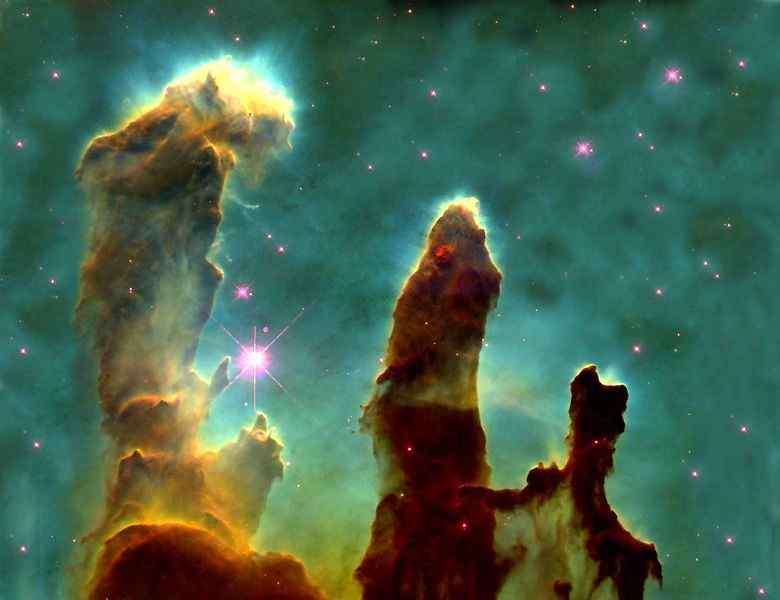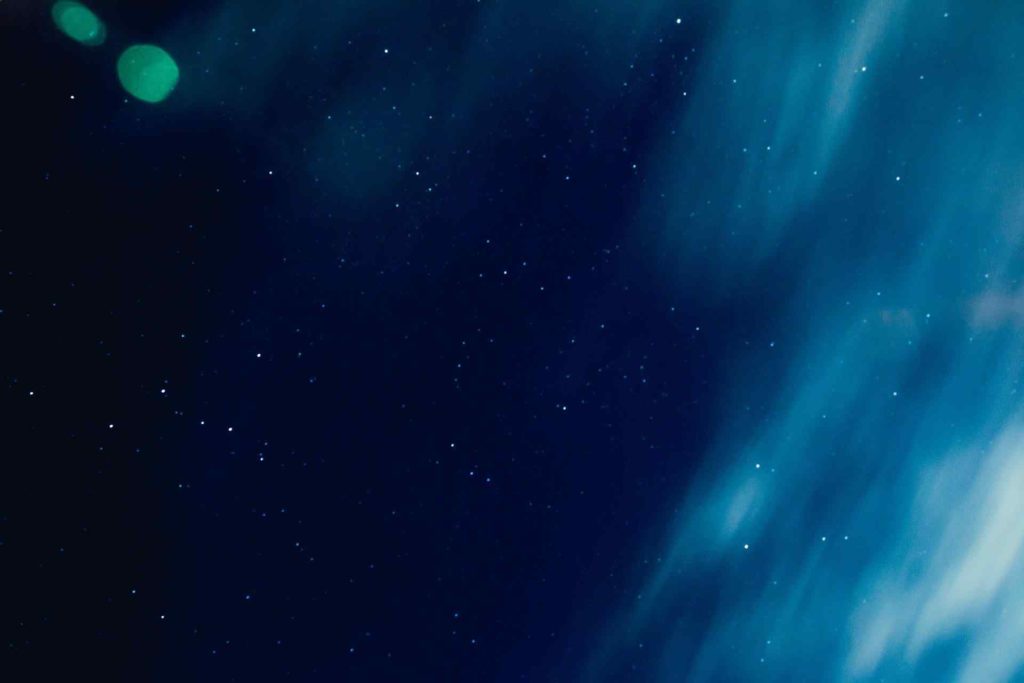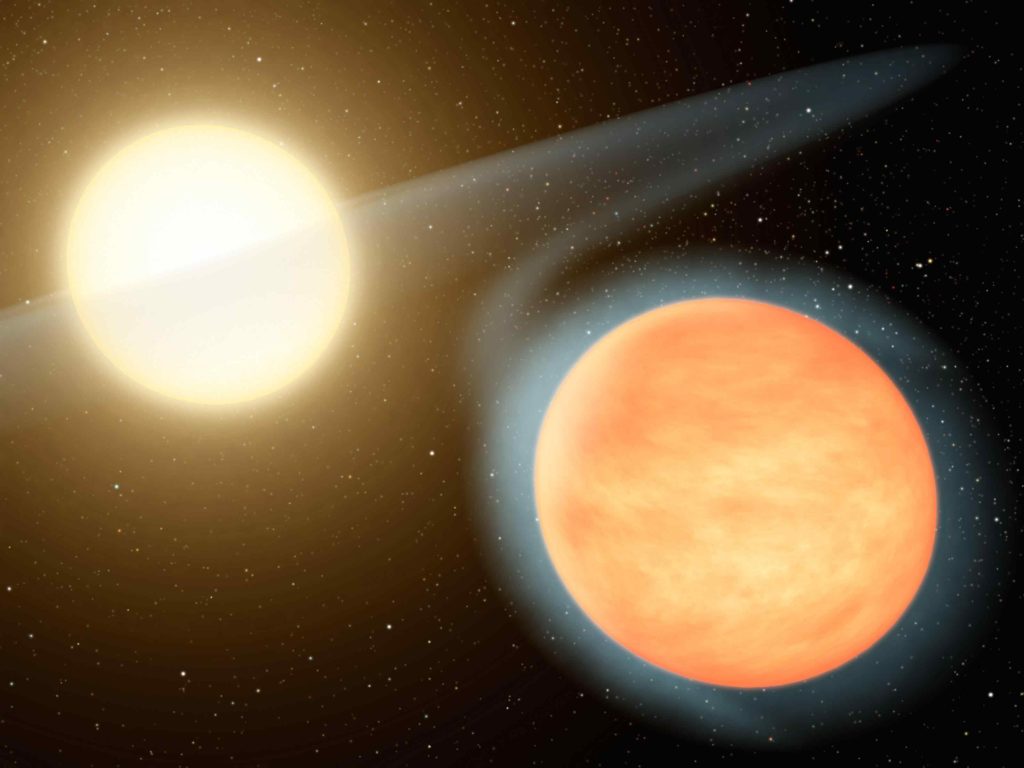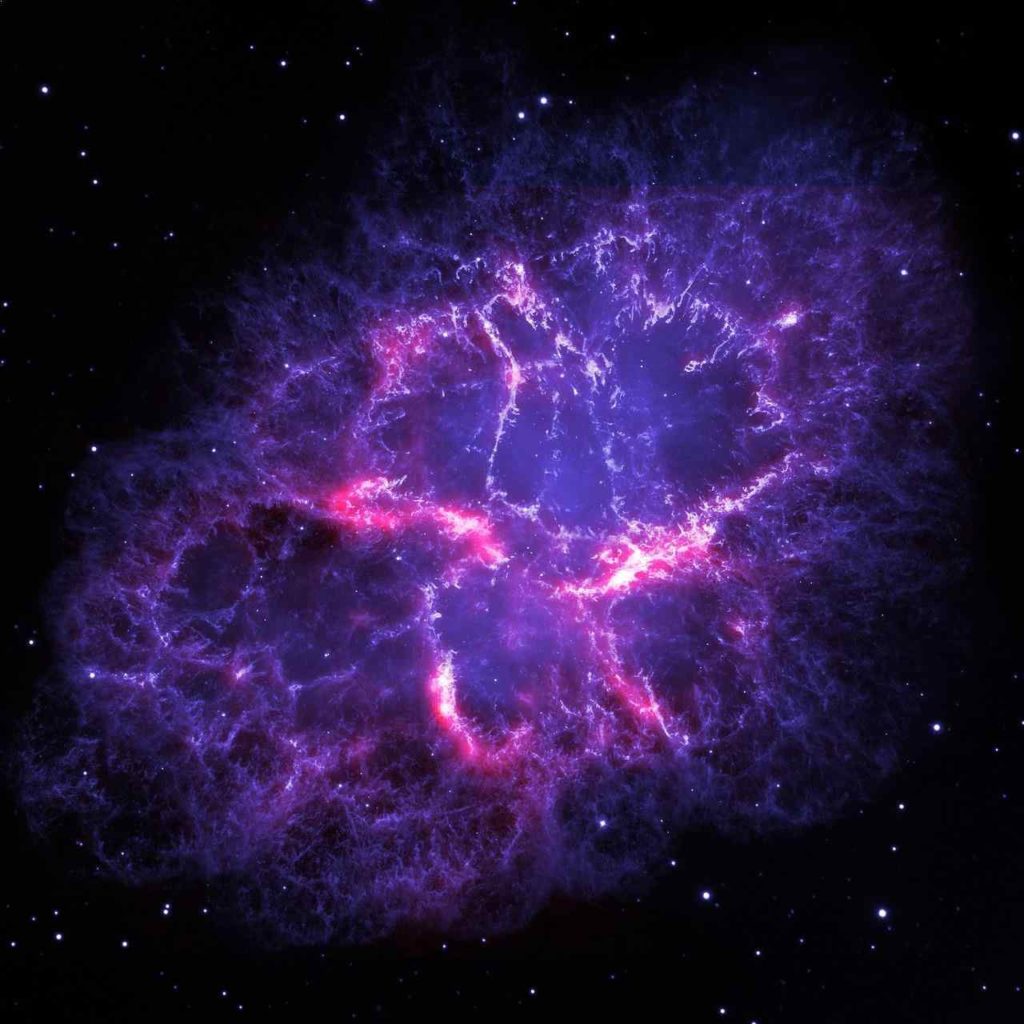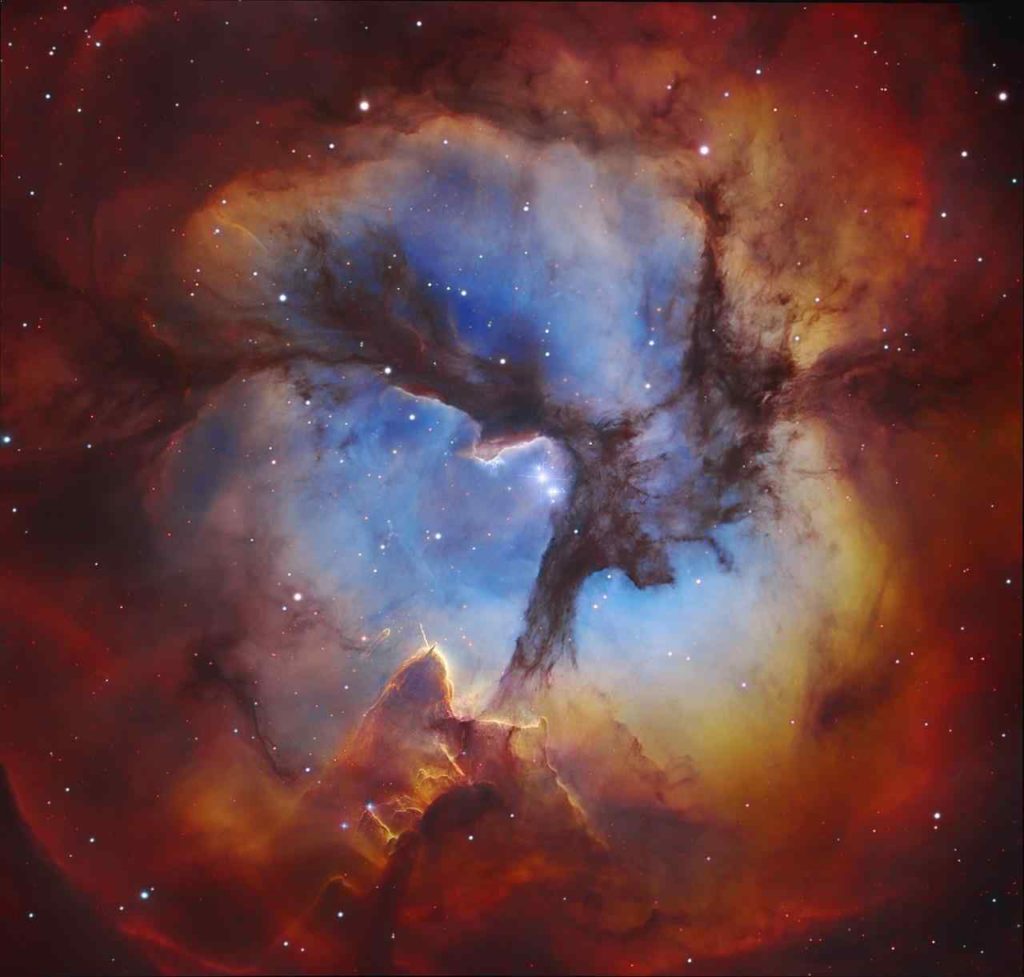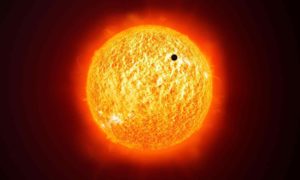Outer space is an unexplored arena where new and intriguing objects continue to be discovered every year and despite so much progress, the only things humans can say for sure is that there is a vast amount of information they do not know about things in outer space. Here is a list of the 10 amazing things you can only find in outer space.
Things You Can Only Find In Outer Space
1. Freezing Star
In school, each one of us is taught that Stars are extremely hot bodies of gas that emit heat and light due to chemical reactions. However, in the vast universe that surrounds us, there are likely many cold stars that have temperatures below freezing. One such star known to humans is WISE 0855−0714 which is a brown dwarf having temperatures between -48 and −13 C. This example is a unique one and is still being studied to find the cause for such temperatures and the future of this star.
Fully designated as WISE J085510.83−071442.5 is a sub-brown dwarf with an approximate distance of (7.27±0.13 light-years) from Earth. It was discovered in the year 2014 by Kevin Luhman by using data from Wide-field Infrared Survey Explorer (WISE). The star has the highest proper motion (8118±8 mas/yr) after Barnard’s Star (10300 mas/yr) and Kapteyn’s Star (8600 mas/yr). The fourth closest extrasolar system to the Sun is the coldest object of its type in outer space with a temperature range 225 to 260 K (−48 to −13 °C; −55 to 8 °F).
Also read: 10 Best Observatories in the World
2. Diamond Planet
Just when you think you know about space, there comes along an extremely strange thing that you can find only in space! The Diamond planet, known to scientists as ‘55 Cancri E’ is a planet that has a core made of carbon and judging by the pressure and temperature of this planet, it is estimated that most of this core may be in the form of diamonds. Though there is no scope of humans reaching this planet anytime soon, the value of all this diamond has been evaluated at 27 nonillion dollars (27 followed by 30 zeros).
Additionally known as 55 Cnc e or Janssen is an exoplanet that revolves around the sun. It takes less than 18 hours to complete an orbit and it is the innermost known planet in the planetary system discovered on 30 August 2004, however, based on observations and recalculations it is concluded that it is taking about 2.8 days to orbit the star and later in 2012, it was also announced that it could be carbon planet. The mass of this planet if 7.8 times that of Earth and the first person to figure out how to extract this diamond will definitely become rich beyond measure.
Related: Top 10 Theories About Dark Energy
Image Source: Nasa
3. Shooting Star
A shooting star is not actually a star but a meteorite travelling very fast that leads to a tail like structure to appear due to burning up of the surface of the meteorite. However, one of the strange things found in outer space is an actual star that travels fast enough to develop this tail. Mira is an actual red giant star that travels so fast through the galaxy that it too has a tail behind it, making it one of the few shooting stars that are actually a star. Mira is not very easy to spot and cannot be seen through the naked eye.
Despite the name, they are not actually stars but small particles of dust and space rocks. People are also confused between comets and meteors. Actually, dust and fragments from a comet are Meteors which enter the Earth’s atmosphere. Technically known as meteoroid, meteor or meteorite is a lump of rock or dust with a flash of light that you can see with your naked eyes and meteorite is what hits the ground If it survives. They are really fast and enters Earth’s atmosphere with a speed of 110,000 miles per hour.
4. Gravitational Lens
Gravity is a force that exists between any two bodies but in space, it does much more than just pull things towards it. One of the strange objects found in outer space is a gravitational lens that is not an actual lens but a play of light when the distance between the source and observer is very large. In such a case, a matter between the source and observer bends the light and it appears that objects in between are passing through a lens.
The Gravitational lensing is caused by a massive body between a distant object and ourselves. The unique part is that it creates an appearance of two or more objects, however, it is only one. The light from the object gets bend around the massive body in between. The massive body can be a galaxy or black hole creates a very strong gravitational field in space that depends on relative distance and position between observer, size of the lens and mass inside the lens. This phenomenon gives very valuable insight into the behaviour of light around gravity in space.
5. Alcohol Cloud
Space clouds are some of the most beautiful and mysterious things in outer space and though they look similar, their composition is very different. About 3500 light years from Earth, there is one such space cloud that consists mostly of Ethanol, the main component of alcohol humans consume. This cloud is enormous and spans 300 million miles in space. According to most estimates, the amount of alcohol in this cloud is enough to fill 400 trillion pints of beer.
It is located ten thousand light years from earth and discovered in 1995 by the researchers of Ohio State University collected data for astronomers. Alcohol Cloud situated near the constellation Aquila in Sagittarius B2 Cloud. Since it is ethyl alcohol(ethanol), so not suitable for drinking, however, it gives a clear indication of alcohol clouds in space. Also, Alcohol is a relatively simple molecule made up of abundant elements such as hydrogen, carbon & oxygen. So, it will not be surprising that it exists in large quantities in space.
6. Supernova
The life of a star in space spans for many billions of years and stars is one of the fascinating things in outer space. Towards the end of a star’s life, it usually explodes and forms what is called a supernova. A supernova is as bright as 100 million Suns though this brightness lasts only for a short time. However, recent studies have shown that there is another way for a star to die and after this, it forms an unnova. An unnova is a star that collapses on itself but does not emit a large number of energy particles.
Supernova is a phenomenon that occurs every second somewhere in the universe, however, the Milky Way galaxy has an average of two supernovae per century but it is very difficult to locate one. The last one in our galaxy was observed 400 years ago but the namesake, Johannes Kepler, considered SN 1604 a new type of star at the time. They can be brighter than a galaxy for a shorter period of time it can outshine entire stars in the galaxy. The in some cases the energy is emitted in the form of gamma rays.
7. Magnetic Cloud
A magnetic cloud is a transient event that occurs on the surface of the Sun during solar winds. The magnetic cloud occurs only if there is a very specific set of environmental conditions present and lasts for a very short while. It results in the creation of an area that has a very high magnetic pull which is not normally seen in space.
According to NASA, A magnetic cloud is a transient ejection in the solar wind defined by relatively strong magnetic fields, a large and smooth rotation of the magnetic field direction over approximately 0.25AU at 1AU, and a low proton temperature. Also, these are one of the most ideal objects for solar-terrestrial studies because of their simplicity and extended intervals between the southward and northward magnetic fields.
8. Pillars of Creation
The Hubble Telescope was one of the landmarks in human space exploration and pictures taken by this telescope have given us great insight into space and have led to the discovery of new things in outer space. One of the most popular pictures taken by this telescope is nicknamed ‘Pillars of Creation’ and looks like a swirling landscape from a sci-fi movie. These pillars are actually masses of hydrogen and dust particles. These pillars are the initial stages of the birth of a star and this is what gave it this name. This picture was taken in the Eagle Nebula, some 7,000 light years from Earth.
The Pillars of Creation is a relatively small feature of the entire Eagle Nebula. Nebula was discovered in 1745 by the Swiss astronomer Jean-Philippe Loys de Cheseaux situated 7,000 light-years from Earth in the constellation Serpens. Eagle Nebula can be spotted with a small telescope and best viewed in the month of July but for the Pillars of Creation requires a large telescope and optimal viewing conditions in the space.
Image Source: Wikimedia
9. Trifid Nebula
A Trifid nebula is an unusual object in outer space located in the constellation Sagittarius, some 5,000 light years from Earth. It consists of an open cluster of stars, an emission nebula, a reflection nebula and a dark nebula. It was photographed from Earth and appears to be a large ball of swirling space dust. It’s an intriguing appearance made is one of the most popular pictures of an outer space object ever taken.
The French astronomer Charles Messier noted the presence of some “nebulous objects” in the night sky and one of these is Trifid Nebula or Messier 20, NGC 6514 is a star-forming region of ionized gas located in the Scutum spiral arm of the Milky Way. It is situated in the direction of the southern Sagittarius constellation. It is a combination of an open star cluster, emissions nebula, reflection nebula, and a dark nebula that have an appearance of three lobes.
10. Galactica Cannibalism
The name ‘galactica cannibalism’ sounds like a horrific ritual from an alien movie, but is actually the name given to a common phenomenon seen among things in outer space. It refers to the process by which a large galaxy ‘eats’ a smaller one i.e. merges with it due to gravitation and results in a larger irregular galaxy. This is a very slow process and such cannibalism among nearby galaxies has been tracked from the Earth.
Image Source: Wikimedia
These are the 10 amazing things you can only find in outer space. Do post your comments.

